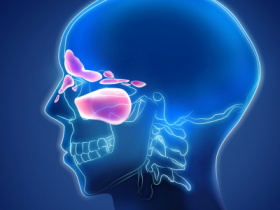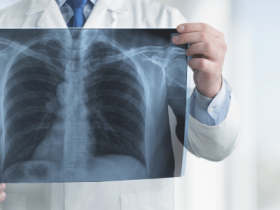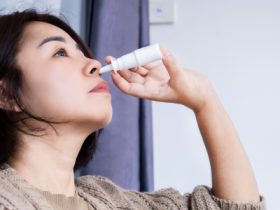The aging of the global population is a major public health concern and has been associated with an increase in the number of frail individuals. However, even though the risk of frailty increases with aging, the degree of frailty can vary greatly among people of the same age. Thus, there is a need to develop easy-to-use tools for detecting individuals who are frail or at risk of becoming frail. Olfactory dysfunction has emerged as a potential marker of frailty and even of mortality. However, previous studies have focused primarily on olfactory identification, which is an indicator of central olfaction, whereas the relationship between frailty and other olfactory subdomains, including the olfactory threshold and olfactory discrimination, has not been clarified.
At the 2024 American Rhinologic Society (ARS) meeting at the COSM that took place on May 15th–16th in Chicago Michael Cheng, MD from Johns Hopkins University presented data that addressed this knowledge gap. The reported study investigated the association between olfactory subdomains and the physical frailty phenotype, to assess whether olfactory subdomain evaluation can be used as a screening tool for frailty.
The data were collected in a prospective case-control study. Potential study participants were screened using the physical frailty phenotype, and frail and non-frail individuals were matched by age and sex. The olfactory discrimination, olfactory identification, olfactory threshold, and composite sum (TDI) scores were measured using the Sniffin’ Sticks test. The physical frailty phenotype was defined by the presence of at least three of the following criteria: physical inactivity, physical weakness, slow mobility, self-reported exhaustion, and significant weight loss. The association between olfactory subdomains and frailty was evaluated using a multivariable logistic regression model, adjusting for multiple covariates to control for potential confounding factors.
The study included 45 frail and 45 non-frail-matched individuals with a mean age of 83.1 years. Among the recruited study participants, 60% were female, 87.8% were white, 35% had a smoking history, and 53.3% were married. No differences in self-reported olfaction were detected between the groups. However, when olfaction was tested objectively, the TDI scores (± SD) were found to be significantly higher in the non-frailty group (32.24 ± 5.70) than in the frailty group (21.74 ± 6.63), indicating a better olfactory function in the non-frailty group (p < 0.001). In addition, the non-frailty group had a better olfactory function than the frailty group in all olfactory subdomains. One-point reductions of the olfactory threshold (OR = 2.21, 95% CI 1.22–3.98), olfactory discrimination (OR = 2.19, 95% CI 1.32–3.65), olfactory identification (OR = 2.29, 95% CI 1.19–4.39), and TDI scores (OR = 1.54, 95% CI 1.14–2.08) were all significantly associated with increased odds of the physical frailty phenotype, after adjusting for smoking, race, and educational status.
The study had several limitations, including its cross-sectional design, the fact that most study participants were white and of an advanced age (which may limit the generalizability of the findings), and the inability to control for stroke as a potentially significant confounding factor. To address these limitations, future longitudinal investigations should be conducted in larger and more diverse study populations.
Dr. Cheng emphasized that this was the first study to demonstrate a robust association between olfactory subdomain scores and frailty, suggesting that olfactory subdomain scores may be valuable frailty biomarkers. Notably, olfaction is not monolithic but is rather composed of both peripheral and central components. The fact that all olfactory subdomains were associated with frailty implies that the relationship between olfactory dysfunction and frailty is likely mediated via multiple mechanisms and physiological systems.







